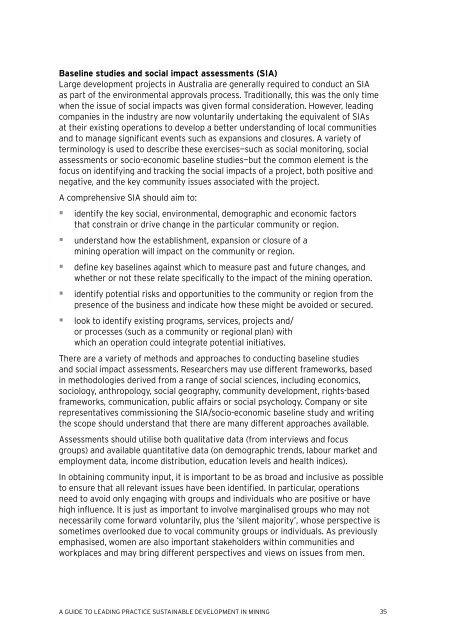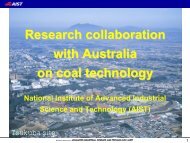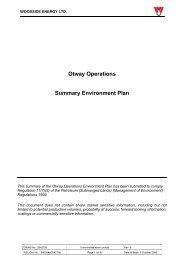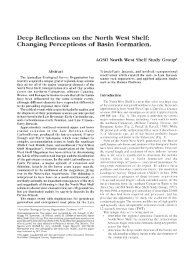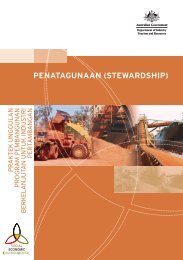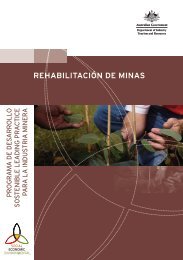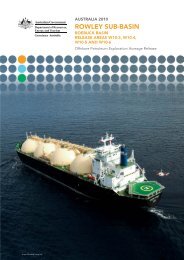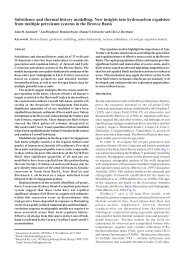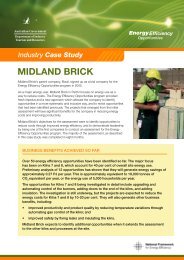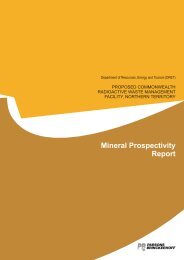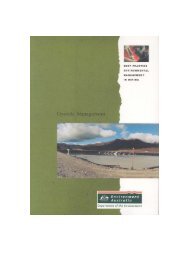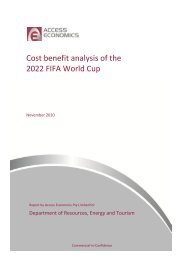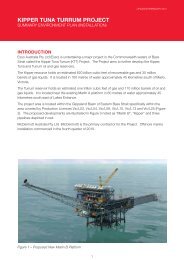A guide to leading practice sustainable development in mining
A guide to leading practice sustainable development in mining
A guide to leading practice sustainable development in mining
You also want an ePaper? Increase the reach of your titles
YUMPU automatically turns print PDFs into web optimized ePapers that Google loves.
Basel<strong>in</strong>e studies and social impact assessments (SIA)<br />
Large <strong>development</strong> projects <strong>in</strong> Australia are generally required <strong>to</strong> conduct an SIA<br />
as part of the environmental approvals process. Traditionally, this was the only time<br />
when the issue of social impacts was given formal consideration. However, <strong>lead<strong>in</strong>g</strong><br />
companies <strong>in</strong> the <strong>in</strong>dustry are now voluntarily undertak<strong>in</strong>g the equivalent of SIAs<br />
at their exist<strong>in</strong>g operations <strong>to</strong> develop a better understand<strong>in</strong>g of local communities<br />
and <strong>to</strong> manage significant events such as expansions and closures. A variety of<br />
term<strong>in</strong>ology is used <strong>to</strong> describe these exercises—such as social moni<strong>to</strong>r<strong>in</strong>g, social<br />
assessments or socio-economic basel<strong>in</strong>e studies—but the common element is the<br />
focus on identify<strong>in</strong>g and track<strong>in</strong>g the social impacts of a project, both positive and<br />
negative, and the key community issues associated with the project.<br />
A comprehensive SIA should aim <strong>to</strong>:<br />
identify the key social, environmental, demographic and economic fac<strong>to</strong>rs<br />
that constra<strong>in</strong> or drive change <strong>in</strong> the particular community or region.<br />
understand how the establishment, expansion or closure of a<br />
m<strong>in</strong><strong>in</strong>g operation will impact on the community or region.<br />
def<strong>in</strong>e key basel<strong>in</strong>es aga<strong>in</strong>st which <strong>to</strong> measure past and future changes, and<br />
whether or not these relate specifically <strong>to</strong> the impact of the m<strong>in</strong><strong>in</strong>g operation.<br />
identify potential risks and opportunities <strong>to</strong> the community or region from the<br />
presence of the bus<strong>in</strong>ess and <strong>in</strong>dicate how these might be avoided or secured.<br />
look <strong>to</strong> identify exist<strong>in</strong>g programs, services, projects and/<br />
or processes (such as a community or regional plan) with<br />
which an operation could <strong>in</strong>tegrate potential <strong>in</strong>itiatives.<br />
There are a variety of methods and approaches <strong>to</strong> conduct<strong>in</strong>g basel<strong>in</strong>e studies<br />
and social impact assessments. Researchers may use different frameworks, based<br />
<strong>in</strong> methodologies derived from a range of social sciences, <strong>in</strong>clud<strong>in</strong>g economics,<br />
sociology, anthropology, social geography, community <strong>development</strong>, rights-based<br />
frameworks, communication, public affairs or social psychology. Company or site<br />
representatives commission<strong>in</strong>g the SIA/socio-economic basel<strong>in</strong>e study and writ<strong>in</strong>g<br />
the scope should understand that there are many different approaches available.<br />
Assessments should utilise both qualitative data (from <strong>in</strong>terviews and focus<br />
groups) and available quantitative data (on demographic trends, labour market and<br />
employment data, <strong>in</strong>come distribution, education levels and health <strong>in</strong>dices).<br />
In obta<strong>in</strong><strong>in</strong>g community <strong>in</strong>put, it is important <strong>to</strong> be as broad and <strong>in</strong>clusive as possible<br />
<strong>to</strong> ensure that all relevant issues have been identified. In particular, operations<br />
need <strong>to</strong> avoid only engag<strong>in</strong>g with groups and <strong>in</strong>dividuals who are positive or have<br />
high <strong>in</strong>fluence. It is just as important <strong>to</strong> <strong>in</strong>volve marg<strong>in</strong>alised groups who may not<br />
necessarily come forward voluntarily, plus the ‘silent majority’, whose perspective is<br />
sometimes overlooked due <strong>to</strong> vocal community groups or <strong>in</strong>dividuals. As previously<br />
emphasised, women are also important stakeholders with<strong>in</strong> communities and<br />
workplaces and may br<strong>in</strong>g different perspectives and views on issues from men.<br />
A GUIDE TO LEADING PRACTICE SUSTAINABLE DEVELOPMENT IN MINING 35


